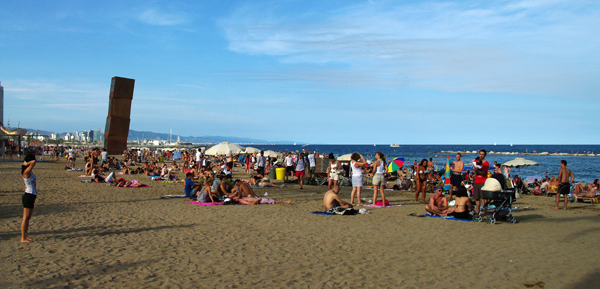A few weeks ago, my fellow blogger posted about the new reef discovered in the Mediterranean Sea. I think that this is truly amazing, and I’m disappointed that so many of the articles have not pointed out some truly fascinating facts about the Mediterranean that make the presence of a thriving coral forest even more astounding.
First, the Mediterranean as we see it now is a relatively young body of water (when thinking about geologic time). In the late Miocene, approximately 6 million years ago, the world endured what is called the Messinian Salinity Crisis where the outlet of the Mediterranean closed and the entire sea (mostly) dried up. This had a profound impact on global climate at the time. The salinity crisis ended when sea levels in the Atlantic rose to a point where they flooded the empty basin of the Mediterranean 5.3 million years ago. This means that the Mediterranean sea as we know it is only 5.3 million years old; a mere child in the grand scheme of global history.
The Mediterranean sea also has a couple of other quirks. The fact that it has such a small outlet to the Atlantic ocean has an impact on its ecology. The small outlet means that the tidal changes in the Mediterranean are small, unlike what it seen in the open ocean, and this in turn leads to warmer waters, higher salinity and lower nutrients that what is found in the Atlantic ocean. Thus, the endemic (that’s native) fauna of the Mediterranean are 100% derived (until 1869) from the Atlantic fauna, but they have had to adapt to conditions that are very different from the conditions in the Atlantic ocean. Despite all of this, there is a thriving marine community in the Mediterranean and it is highly endemic.
1869 is an important year for the Mediterranean sea as it is the year that the Suez Canal was completed. With the completion of the Suez Canal, we opened – for the first time – a migratory route for the fauna of the Red Sea to colonize the Mediterranean. And those Red Sea creatures must be made of pretty strong stuff as they have been out-competing the native fauna for the last 150 years.
So, lets think about our hidden reef in the light of this information. The new reef seems to be old and it is located in the western portion of the Mediterranean sea – this indicates that it is endemic, and derived from the Atlantic fauna. That a reef was colonized from the Atlantic is fascinating (although global temperatures were much higher in the Miocene than they are today). It also means that it is certainly in danger – not only from global climate change – but from the Red Sea invasive species as well. Hopefully scientists will be able to protect, study and explore this new, important find.











0 Comments